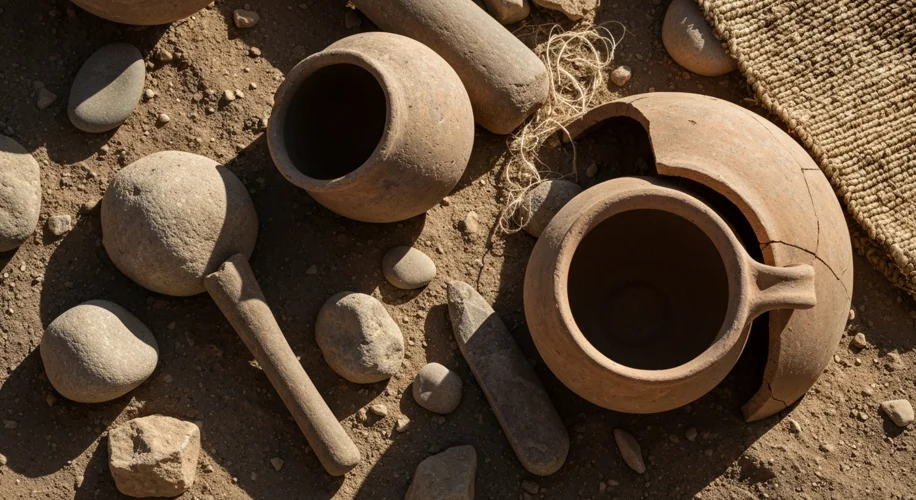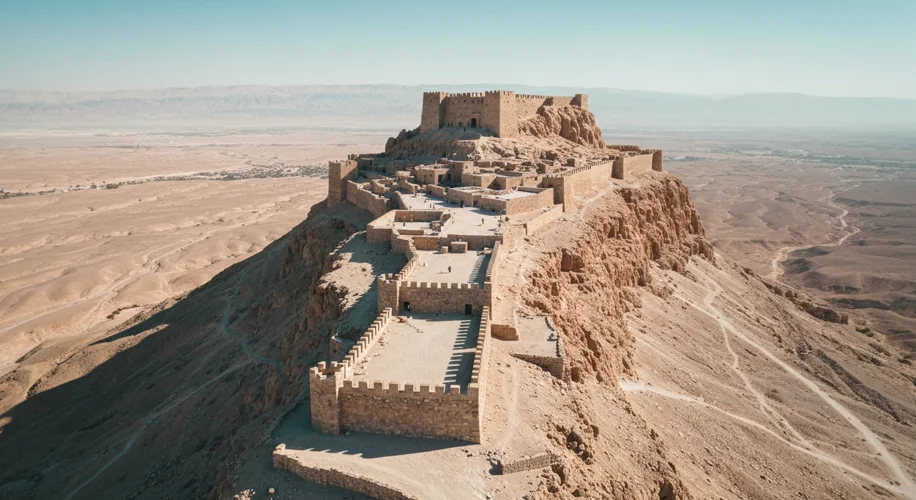The Unyielding Mountain Fortress
Perched precariously atop a rugged mesa overlooking the Dead Sea, the ancient fortress of Masada stands as a stark testament to a tragic and defiant chapter in Jewish history. For centuries, its story has echoed through time, a powerful narrative of courage, desperation, and a final stand against overwhelming odds.
A Royal Retreat and a Rebel Stronghold
Masada’s story begins not with rebellion, but with a king. Herod the Great, a ruler known for his ambitious building projects and often brutal reign, transformed the natural fortress into a luxurious desert palace between 37 and 31 BCE. He constructed lavish residences, storehouses, and sophisticated water systems, creating an opulent retreat in the desolate Judean wilderness. His vision was to make Masada a symbol of his power and a secure refuge.
Little did he know that Masada would later become a symbol of a far different kind of defiance.
The First Jewish-Roman War Erupts
In 66 CE, a simmering discontent among the Jewish population in Judea erupted into full-blown rebellion against the Roman Empire. The First Jewish-Roman War, or the Great Revolt, raged for years, marked by fierce battles and Roman attempts to crush the uprising. As the Roman legions, led by General Vespasian (and later his son Titus), systematically conquered Jewish cities, a group of Jewish rebels, known as the Sicarii, sought refuge in the formidable fortress of Masada.
The Zealots’ Last Stand
Under the command of Eleazar ben Ya’ir, a charismatic Sicarii leader, a group of approximately 960 Jewish men, women, and children occupied Masada. For nearly three years, from 70 to 73 CE, they held out against the might of the Roman Empire. While the Romans were formidable, Masada’s strategic location and Herod’s ingenious fortifications made it incredibly difficult to assault. The rebels, isolated and with limited supplies, faced a grim reality: surrender and likely enslavement, or a desperate fight to the end.
The Roman Siege: An Engineering Marvel of Oppression
Roman General Flavius Silva understood that a direct assault on Masada would be costly. Instead, he opted for a siege, a strategy designed to starve the rebels into submission. The Romans encircled the base of the mountain, preventing any escape or resupply. But their most impressive feat of engineering was the construction of a massive siege ramp, built from thousands of tons of rock and earth, reaching towards the western side of the fortress. This ramp allowed them to bring battering rams to bear against Masada’s walls.
The Tragic Climax
As the Roman ramp neared completion and the fortress’s fall seemed inevitable, a dark decision was made. According to the historian Josephus, who is our primary source for the events at Masada, Eleazar ben Ya’ir addressed his people, arguing that suicide was a nobler fate than capture and enslavement by the Romans. He persuaded the men to kill their families and then themselves, choosing death over dishonor.
On the night of April 15, 73 CE, the Sicarii reportedly drew lots to determine who would kill the others. The next morning, when the Roman soldiers finally breached the walls, they found the fortress silent, strewn with the bodies of its defenders. Only two women and five children, who had hidden in cisterns, survived to tell the tale.
Echoes of Masada
The story of Masada, though steeped in tragedy, has resonated through Jewish history as a powerful symbol of resistance and the pursuit of freedom. It embodies the ultimate sacrifice for one’s beliefs and homeland, a narrative that has been invoked throughout centuries of persecution and struggle. For many, Masada represents the unyielding spirit of a people fighting for their right to exist with dignity and self-determination. In modern Israel, Masada remains a potent symbol, with new recruits to the Israel Defense Forces often taking an oath there, vowing that “Masada shall not fall again.”




